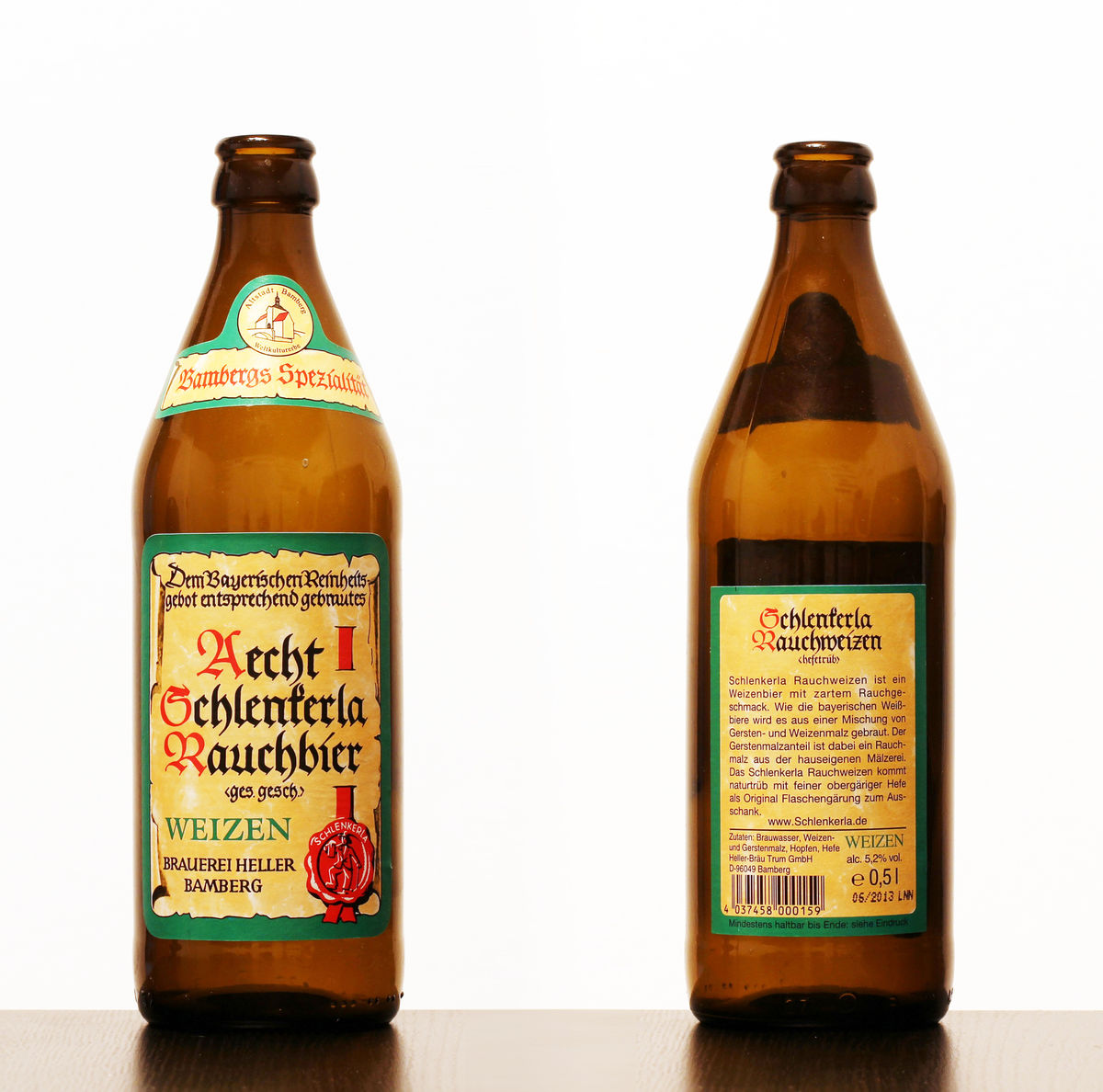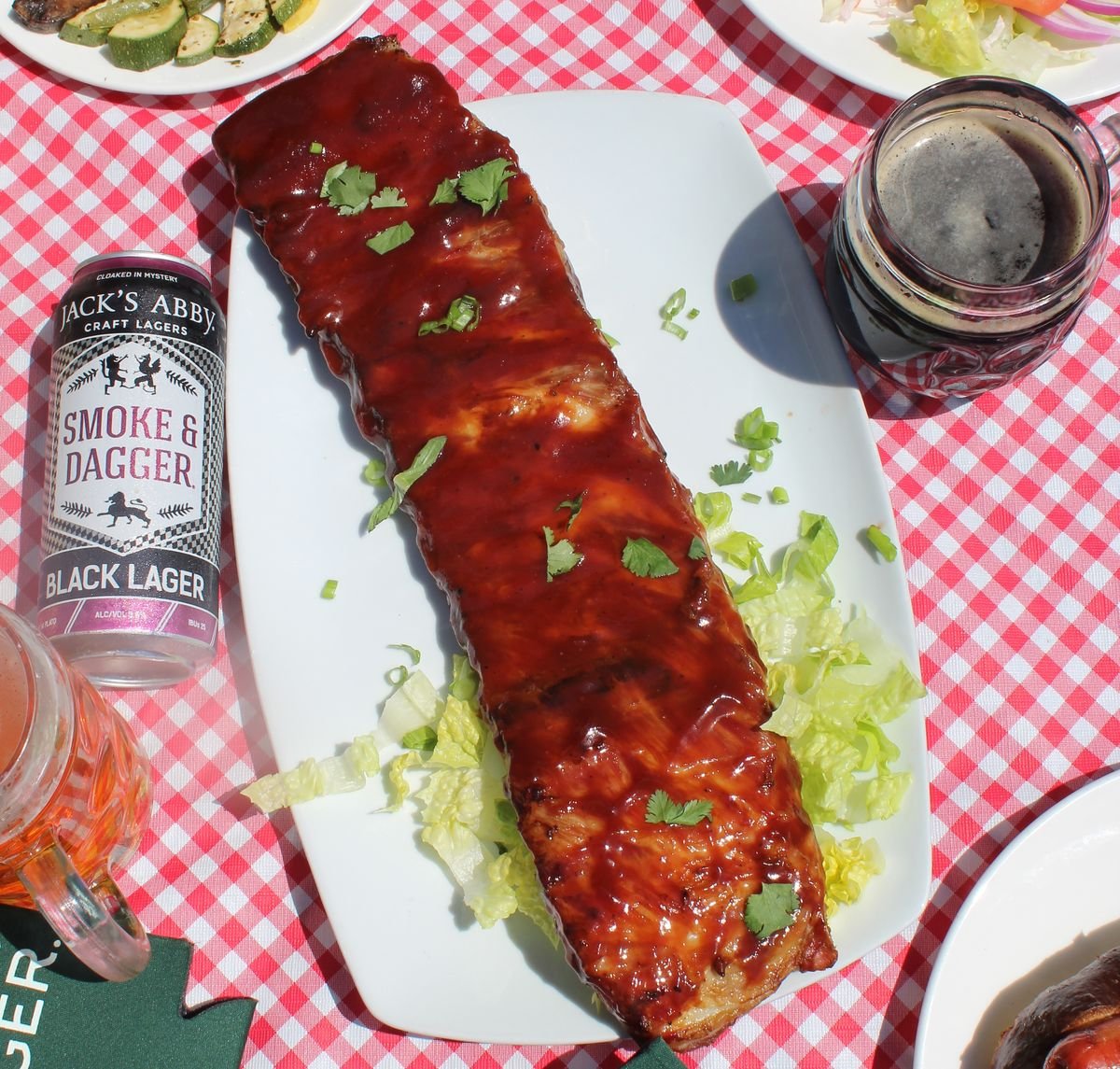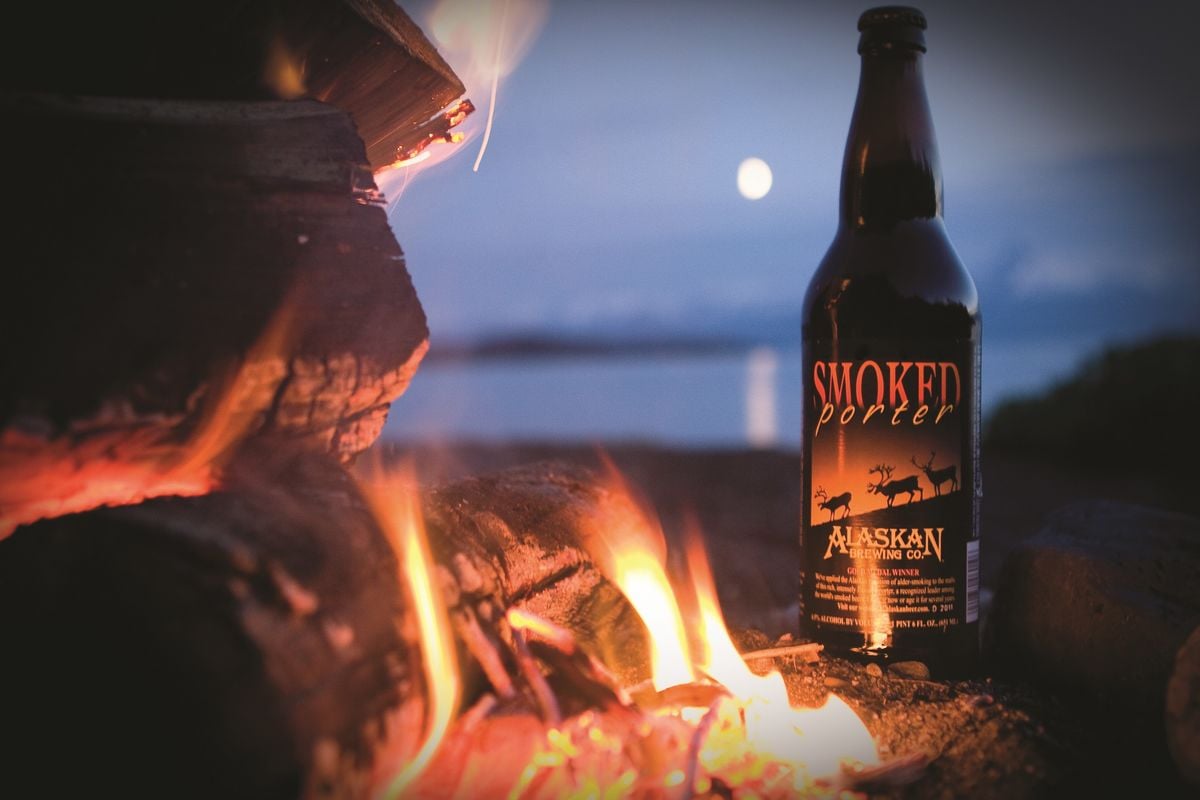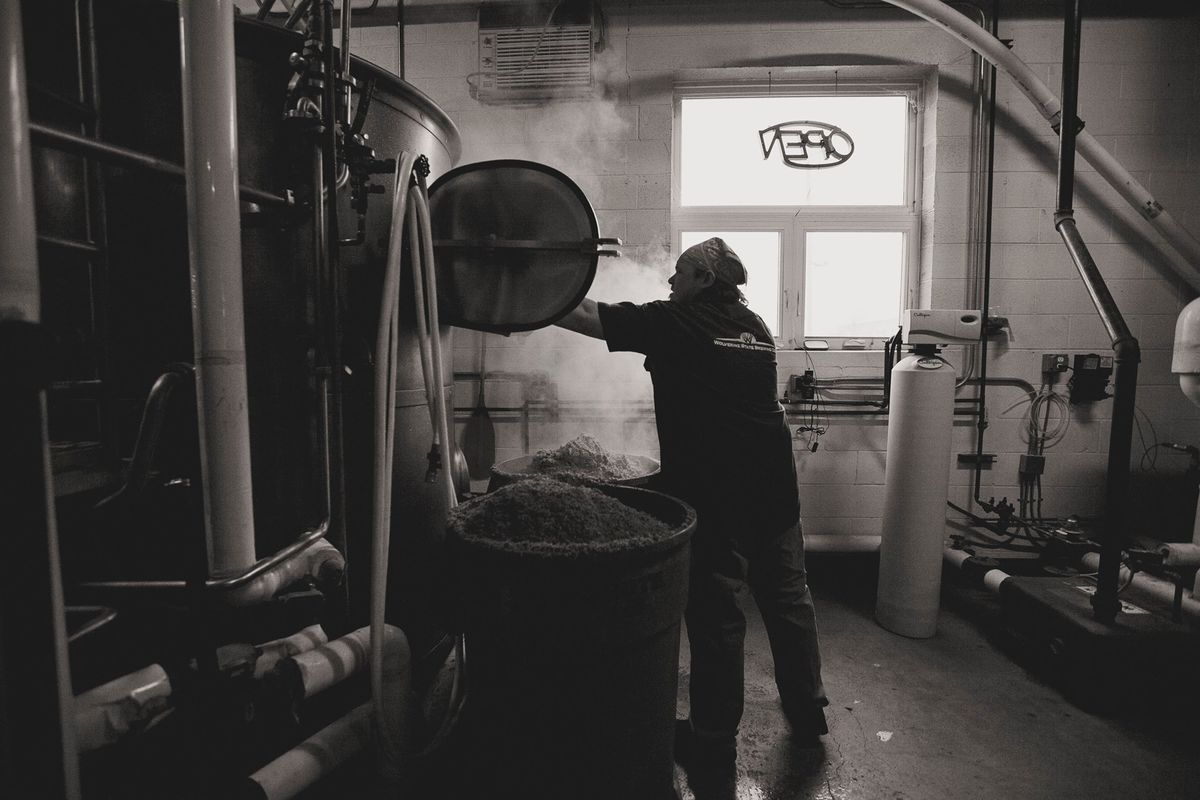Start 14-Day Trial Subscription
*No credit card required

Pairing Barbecue with Smoked Beer
A famed painter on television made a career touting, “We don't make mistakes, just happy little accidents.” The origin of smoked beers has been recorded as an accident, but it took several hundred years before the style, and resulting beers, made most beer drinkers happy. As smoked beer styles advanced it did not take long to realize their compatibility with other smoked goods – specifically barbecue. Today, pairing barbecue with smoked beer has become a match made in heaven.
Smoked beers, known originally as Rauchbier (German for “smoked beer”), started in Bamberg, Franconia, Germany in the early 15th century. Two breweries there, Schlenkerla and Spezial, were founded in 1405 and 1536, respectively. Today these two breweries still exist and produce Rauchbier in the old way: drying malt over an open fire.
Unlike the Sumerians and ancient Egyptians who lived in arid places where drying could be done via the sun, in Bamberg brewers needed to create a heat source, hence making fire. Early materials used for drying malted barley included straw, a variety of woods and even coal. As wood became scarce in 16th century Europe, burning straw became the norm, as coal was heavily taxed (and incredibly impure). Beechwood was always used and is still the preferred wood today, with both aforementioned Bamberg breweries using it exclusively for their malting process. For drying their barley, these breweries will smoke the grains for 18-22 hours until ready.
In those early days of fire-drying, and along with the problems of inconsistency of sourcing materials and unpredictability of temperature control, Daniel Wheeler came along to change the game entirely. He invented an innovative device for kilning and roasting malt, which he patented in 1818. This British engineer offered brewers a way to remove smoke from heat, as well as moisture from malted barley. Nearly anything could be used as a fuel source and the temperature could be controlled. Why would anyone want smoked beers anymore?
As illustrated by creative, modern-day brewers, it seems that smoked beers are still relevant. Add to that the ever-evolving emphasis on beer and food pairings, and it could be argued that smoked beers are a secret ingredient for powerful pairings, especially when it comes to pairing smoked beers with barbecue.

Smoked beers, known originally as Rauchbier (German for “smoked beer”), started in Bamberg, Franconia, Germany in the early 15th century. Two breweries there, Schlenkerla and Spezial, were founded in 1405 and 1536, respectively.
To understand what smoked beers are, here are the Overall Impressions and Commercial Examples from three entries in the 2015 BJCP Guidelines:
Rauchbier
Overall Impression: An elegant, malty German amber lager with a balanced, complementary beechwood smoke character. Toasty-rich malt in aroma and flavor, restrained bitterness, low to high smoke flavor, clean fermentation profile, and an attenuated finish are characteristic.
Commercial Examples: Eisenbahn Rauchbier, Kaiserdom Rauchbier, Schlenkerla Rauchbier Märzen, Spezial Rauchbier Märzen Victory Scarlet Fire Rauchbier
Classic Style Smoked Beer
Overall Impression: A smoke-enhanced beer showing good balance between the smoke and beer character, while remaining pleasant to drink. Balance in the use of smoke, hops and malt character is exhibited by the better examples.
Commercial Examples: Alaskan Smoked Porter, Schlenkerla Weizen Rauchbier and Ur-Bock Rauchbier, Spezial Lagerbier, Weissbier and Bockbier, Stone Smoked Porter
Specialty Smoked Beer
A Specialty Smoked Beer is either a smoked beer based on something other than a Classic Style, or any type of smoked beer with additional ingredients (fruits, vegetables, spices) or processes employed that transform the beer into something more unique.
Overall Impression: A smoke-enhanced beer showing good balance between the smoke, the beer character, and the added ingredients, while remaining pleasant to drink. Balance in the use of smoke, hops and malt character is exhibited by the better examples.
To understand how smoked beers might work with smoked meats, we turn to Beer Pairing: The Essential Guide from the Pairing Pros by Julia Herz and Gwen Conley. In this excellent read the authors state, “While you might get lucky searching for contrasting taste elements, it’s much easier to search for places where beer and food flavors will work together, the intersections where they complement each other.” Further along in the book the authors note, “For pairing beer and food, the goal is almost always to have the overall beer and food intensities match. You don’t want any one element to barrel over all the others.”
There are two things here that favor pairing smoked beers with smoked meat. First, it’s often easier to pair complementary flavors, not just with the smoke aromas and taste, but with attention to the maltiness present in many prominent smoked beers, especially in the traditional smoked Märzen lager, and some of the richer barbecue cuts and sauces.
Secondly, barbecue can vary in intensity, depending on the type and cut of meat, dry rub used (if any), length of time it was smoked and which woods were used (Mesquite, for example, burns hot and fast, and produces a lot of smoke and a strong flavor. Oak, on the other hand, burns slow and even and has a mild flavor).
The variety of smoked beers available today also vary in their intensity. Some beers only contain about 10 percent smoked grains in their mash bill while others may have up to 100 percent.
Many good barbecue restaurants will offer their sauces on the side, allowing patrons to adorn the smoked goods with just the right amount of sauce. A very good barbecue restaurant will offer sauces that range from sweet and thick to vinegary and thin, with an ample helping of South Carolina-style mustard sauces in the middle.
For this guide it will be helpful to cover the four major regional styles of barbecue. They are generally accepted as:
- Carolinas: Carolina barbecue is usually pork, served pulled, shredded, or chopped, but sometimes sliced.
- Kansas City: Kansas City style is characterized by a wide variety in meat, particularly including beef, pork, and lamb, and is rubbed with spices, slow-smoked over a variety of woods and served with a thick tomato-based barbecue sauce.
- Memphis: Memphis barbecue is primarily two different dishes: ribs, which come "wet" and "dry", and barbecue sandwiches. Wet ribs come with sauce that’s been added while still smoking and dry is when only a dry rub seasoning has been applied.
- Texas: Texas barbecue is big, like the state, and even has its own four sub-regions, but the primary signature of Texas barbecue is an emphasis on serving slow-smoked beef.

There are two things here that favor pairing smoked beers with smoked meat. First, it’s often easier to pair complementary flavors, and, second, barbecue can vary in intensity and burns hot and fast, which contrasts well with the slow, mild burn of oak in smoked beers.
Below are four suggested pairings of a noted smoked beer and barbecue dish from each of the four major regions outlined above. Again, the inspiration behind these pairings is to match intensity and complement the stand-out flavors in both beer and food. What should be a consideration when pairing smoked beers and barbecue is not to have the smoked flavors of each cancel each other out, which can happen if not careful, so consider the dish as a whole and the beer style when trying these and creating your own smoked pairings.
Wolverine State Brewing Company’s Raucher Smoked Lager with Kansas City Burnt Ends
Yes, Kansas City is where barbecue sauce is part of its cultural identity, but so are burnt ends, which are the fattiest part of the brisket, twice-cooked. With a heavy char because of a long cook time, burnt ends are considered a delicacy in the world of barbecue. Sometimes eaten without sauce, burnt ends can certainly stand up to a traditional Kansas City barbecue sauce made with stewed tomatoes and molasses.
To pair with a delicacy, we look to Wolverine State Brewing Company’s Raucher Smoked Lager. This lager-only brewery in Michigan has proven itself in the world of smoked beers, having won a Bronze at the 2016 World Beer Cup, a Gold at the 2016 GABF, and then another Bronze at the 2018 GABF. This amber lager doesn’t knock one down with a lit campfire log. As the host of Pure Brews America, Shannon Long, says when she visited the brewery and tasted its beer, “You don’t get burnt bonfire. You get a happy smoke.”
Here the pairing shines because the carbonation of the Smoked Lager will calm the richness of the burnt ends, refreshing the palate to come back for more. Across the board, an amber lager is one of the more versatile beers for food pairings, and here is no exception. With the non-aggressive smokiness of Raucher Smoked Lager and the umami-forward burnt ends, the entire sensory experience is about delicate balance.
This is further backed up on Wolverine State Brewing’s website: “When crafting a smoked beer of any kind, a balance must be struck between three things: hop bitterness, malty sweetness and smokiness. Too smoky, and you're drinking a hammy campfire. Too sweet, and the style loses its oomph. Drown it in hops, and you've got another beer entirely.”
Jack’s Abby Smoke & Dagger with Memphis-Style ‘Wet’ or ‘Dry’ Ribs
“Heads up, Smoke & Dagger isn't actually a Rauchbier,” says Jack Hendler, co-owner of Jack’s Abby. “It's a cross between a schwarzbier and smoked porter.” Whatever it is, it’s popular. It’s been a core beer for the brewery since its first month of operation. It was the third beer the brewery ever brewed, and the recipe has never changed. The use of Beechwood smoked malt adds complexity, but it only makes up 10 percent of the malt bill. It’s the “liberal use of chocolate malts,” says Hendler, that gives the beer notes of roasted grains, coffee, and a sweet chocolatey character.
Hendler agrees that this beer goes best with ribs – and sunshine. “Some people think dark beer has no place on a hot summer day. We are not those people,” he says. “The rich, smoky flavor of this lager is balanced beautifully by the sticky sweet barbecue sauce. If dry ribs are more of your thing, you’re in luck. The dry roasty notes of this beer will accentuate the flavors of the rub.”
To peg Smoke & Dagger in its place among beer styles, it’s a Black Lager, and with this style one gets the rich, roasted characteristics often found in stouts and porters but with a much lighter mouthfeel. Pairing it with “sticky” ribs allows the beer and dish to harmonize instead of bogging down with sugar, spice and flavors not nice. And back to matching intensity – this beer uses a small amount of smoked malts; ‘wet’ ribs use lots of sugar, covering most of the smokiness in the meat.

Alaskan Smoked Porter with Carolina-Style Pulled Pork
Introduced in 1988, “Alaskan Smoked Porter has been credited with helping inspire an American revival of smoked beers and is one of the most award-winning beers in the history of the Great American Beer Festival,” says Lena Gilbertson, Marketing Specialist at Alaskan Brewing Co. When Alaskan Brewing Co. co-founder, Geoff Larson, first conceived of Smoked Porter, “he was inspired by the alder wood-fired smokers traditionally used to smoke salmon in Southeast Alaska.”
“The dark, robust body and pronounced smoky flavor make Smoked Porter an excellent companion to smoked seafood and meats, cheeses and other robust foods,” says Gilbertson.
Pulled pork is one of the fattier cuts of traditional barbecue out there, just as smoked salmon is one of the fattier fishes. Seasoned pit masters will tell you that smoke adheres to two things in barbecue: moisture and texture. With or without sauces, pulled pork, often carved up after an entire pig has been smoked, offers up plenty of moist fat and texture onto which smoke adheres; this is why Alaskan Smoked Porter will exquisitely match an intensely smoked dish like this.
There are two more particulars of this pairing that work together. The first is the likely saltiness of the pork, as pulled pork is known to be prone. “Salt is sacred,” writes Julia Herz. “It is used in both food and beer to enhance flavors.” The salt in the pulled pork should enhance the “pronounced smoky flavor” of Alaskan Smoked Porter. The second particular is the fact that this beer is a porter. With the medium-aggressive hop bitterness of this beer style, it will work well to diminish the fat of the meat.
Aecht Schlenkerla Rauchbier Märzen with Texas Smoked Brisket
This guide would be remiss if it did not include the most iconic smoked beer still available, the one that started it all. The Aecht Schlenkerla Rauchbier comes in three varieties: urbock, märzen and weizen. It’s the Märzen that carries the strongest rauch flavor. (Schlenkerla also produces a helles that does not use smoked grains. Although many say it still has a smokiness because it’s made in the same kettles with the same yeast as the Rauchbier). Not only is the Märzen selected for its levels of smoke, the fact is this Oktoberfest style is an excellent pairing for the sultry, slow-cooked beef brisket common in Texas barbecue.
Well-prepared brisket can be smoked for up to eight hours at temperatures between 195- and 225-degrees Fahrenheit. And where this barbecue shines most is through the rub that was being smoked right along with the meat. When finished, brisket is more than fork-tender, and its flavors have been locked in place.
A well-made märzen can stand up to all sorts of hearty dishes. With its caramel malt body and toasted bread crust (thanks to the Munich malt), there is interplay between meat and beer. Why this pairing works well is best described as a one-two punch. Taking a bite of the tender, moist brisket that is clearly smoked but not at all “burnt” or “charred,” and then following it with a sip of Aecht Schlenkerla Rauchbier that will pull out each whiff of smokiness inherent in the brisket. It creates a finish that is deeply satisfying.
While moderation can be a safe way to approach pairing beer and food; sometimes it’s best to dive mouth-first into things. Such is the case of putting smoked beers alongside smoked barbecue. Intensity, complements, delicacy, nuance: all these play happily when imbibing beers that took time and dedication to make and food that took hours and hours to smoke. It’s well worth a try.

Smoked beers are a secret ingredient for powerful pairings, especially when it comes to pairing smoked beers with barbecue.



